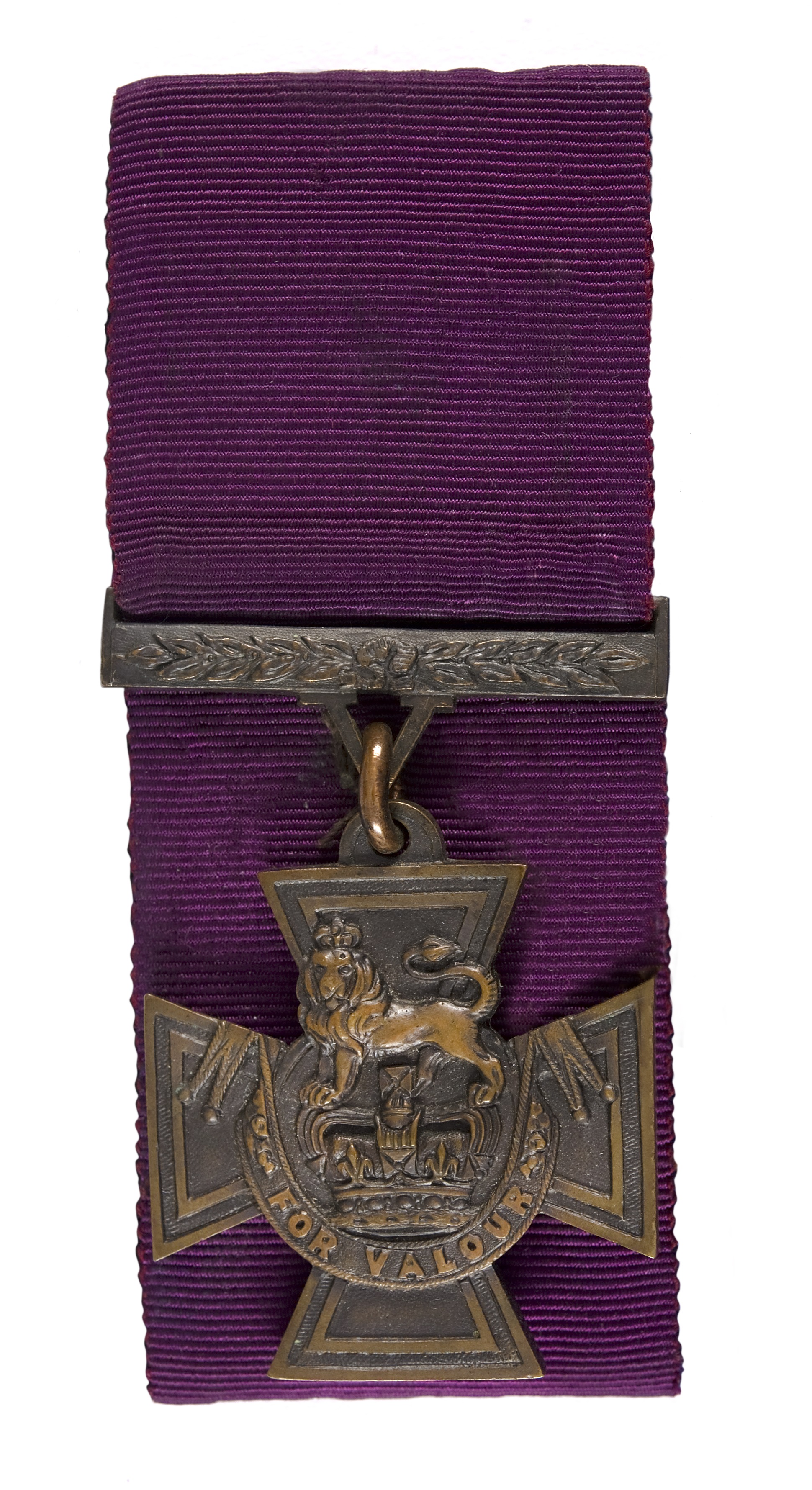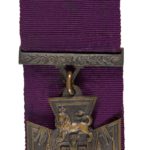Victoria Cross
- What can we see?
We can see a lion standing on top of a crown. We can also see the words ‘For Valour’ underneath the crown.
Look closely, what can you see?
- What do we know?
This Victoria Cross was awarded to Petty Officer Tommy Gould in 1942 for his act of bravery while serving aboard a submarine.
The Victoria Cross award was established by Queen Victoria on 29 January 1856. It is the highest military honour for British and Commonwealth servicemen. It is awarded for acts of conspicuous bravery in the face of the enemy. It is very rarely awarded, but it can be received by an individual of any rank.
The lion on the award represents bravery and valour, and reflects traditional British royal crests and heraldry. The lion stands upon the Coronation Crown which represents the British monarchy.
- What might we wonder?
We might wonder how heavy the medal is? We might also wonder how Tommy felt when he was awarded the medal?
What do you wonder?
- Object File
Object name: Victoria Cross
Date: 1942
Catalogue number: JM 2014.119
Material(s): Bronze
On display in the Jewish Museum? Yes
Tommy Gould was born in Dover on 28th December 1914. He joined the Royal Navy on 29th September 1933. By the outbreak of World War II, Gould was an experienced submariner, and in August 1940 he was promoted to Acting Petty Officer. On February 16th 1942, his submarine, HMS Thrasher torpedoed and sank an enemy supply ship off the north coast of Crete. The enemy counter-attacked, and dropped 33 water-proof bombs on Thrasher. The Thrasher survived the attacks; however, later that evening two unexploded bombs were found in the gun casing of the submarine. Lieutenant Peter Roberts and Petty Officer Tommy Gould volunteered to remove the live bombs. This was an incredibly dangerous mission because if the bombs exploded, both of the men and the submarine could have been lost. Furthermore, the submarine was in enemy territory and risked having to dive underwater at any time which would have drowned both men.
The first bomb, which weighed around 100lb, was found lying on the submarine’s casing. While Gould held the bomb still, Roberts put an old potato sack round it and then dragged it 100ft forward to drop it overboard. The two men found the second bomb inside a hole in the submarine’s casing not far from where they found the first bomb. The two men lowered themselves down into a nearby trap door and wriggled 20 ft forward on their stomachs to where the bomb lay. Gould lay flat on his back with the bomb in his arms as Roberts dragged him by the shoulders, working the bomb through the narrow casing and easing it up through the grating. Gould said that the bomb made a disconcerting twanging noise whenever it was moved, and it was forty minutes before the two men were in the clear. They wrapped the bomb in the sack, carried it forward, and dropped it over the bows, saving the lives of all men on board. For their act of bravery both men received the Victoria Cross from King George VI at Buckingham Palace in June 1942.


